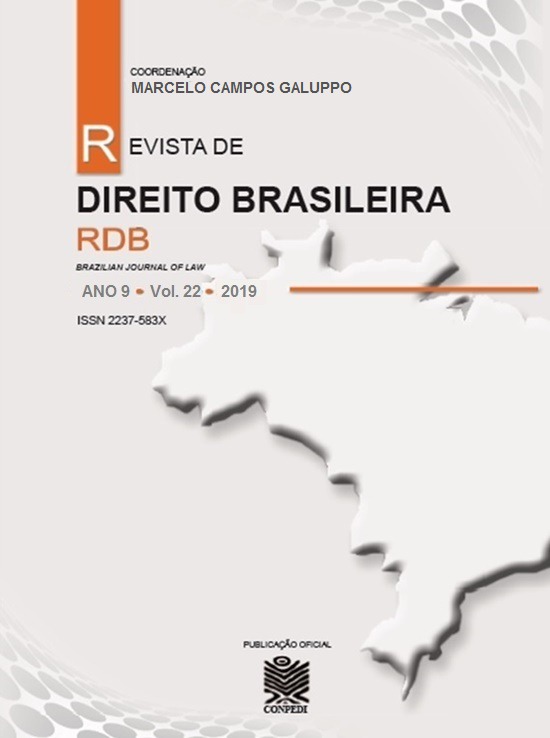THE NUCLEAR TABOO AND THE INTERNATIONAL CAMPAIGN TO ABOLISH NUCLEAR WEAPONS
Conteúdo do artigo principal
Resumo
This article uses Mary Douglas’ landmark theorization of purity and danger to explore the development of the ‘nuclear taboo’ and ICAN’s creative manipulation of discourses of nuclear pollution. ICAN placed people who had long been marginalized by nuclear diplomacy – survivors, women, indigenous people, civilians, representatives of small states – at the center of the conversation about nuclear weapons. In doing so, ICAN deconstructed discourses legitimating nuclear weapons, revealing the ambivalence and fear underneath diplomatic euphemism. ICAN also turned the stigma associated with nuclear weapons onto those who defended them. I conclude by reflecting on the importance in being transparent about how pariah status for a weapon is socially constructed. Openly discussing the process of stigmatization need not undermine or delegitimize it. Rather, seeing pariah status as a political process enables us to have a conversation about how to address threats to human security without resorting to coercive control.
Downloads
Detalhes do artigo
• O(s) autor(es) garante(m) que a contribuição é original e inédita e que não está em processo de avaliação em outra(s) revista(s);
• A revista não se responsabiliza pelas opiniões, ideias e conceitos emitidos nos textos, por serem de inteira responsabilidade de seu(s) autor(es);
• É reservado aos editores o direito de proceder ajustes textuais e de adequação do artigo às normas da publicação.
Autores mantêm os direitos autorais e concedem à revista o direito de primeira publicação, com o trabalho simultaneamente licenciado sob a Licença Creative Commons Attribution que permite o compartilhamento do trabalho com reconhecimento da autoria e publicação inicial nesta revista.
Autores têm autorização para assumir contratos adicionais separadamente, para distribuição não exclusiva da versão do trabalho publicada nesta revista (ex.: publicar em repositório institucional ou como capítulo de livro), com reconhecimento de autoria e publicação inicial nesta revista.
Autores têm permissão e são estimulados a publicar e distribuir seu trabalho online (ex.: em repositórios institucionais ou na sua página pessoal) a qualquer ponto antes ou durante o processo editorial, já que isso pode gerar alterações produtivas, bem como aumentar o impacto e a citação do trabalho publicado (Veja O Efeito do Acesso Livre) emhttp://opcit.eprints.org/oacitation-biblio.html
Referências
Acheson, R., T. Nash & R. Moyes. (2014) A Treaty Banning Nuclear Weapons: Developing a Legal Framework for the Prohibition and Elimination of Nuclear Weapons. New York, Article 36 & Reaching Critical Will.
Biswas, S. (2014) Nuclear Desire: Power and the Postcolonial Nuclear Order. Minneapolis, University of Minnesota Press.
Bolton, M. (14 May 2015) “No New Information on the Consequences of Nuclear Weapons? Deconstructing Nuclear Discourse at the 2015 Nuclear Non-Proliferation Treaty Review Conference.” NPT News in Review. 13(10). p. 7. <https://goo.gl/VMHa4n>.
Bolton, M. & E. Minor. (2016) ‘The Discursive Turn Arrives in Turtle Bay: The International Campaign to Abolish Nuclear Weapons’ Operationalization of Critical IR Theories.’ Global Policy. 7(3). pp. 385-395.
Bolton, M., S. Froese & A. Jeffrey. (2016) ‘“Go get a job right after you take a bath”: Occupy Wall Street as Matter Out of Place.’ Antipode. 48(4). pp. 857-876.
Charbonneau, L. (2015) ‘Belarus diplomat worries topless, mayo-throwing women could disrupt U.N.’ Reuters. <http://www.reuters.com/article/us-un-belarus-mayonnaise-idUSKBN0LF2MA20150211>.
Cohn, C. (1987) ‘Sex and Death in the Rational World of Defense Intellectuals.’ Signs. 12(4). pp. 687-718.
de Santana, A. H. (2009) ‘Nuclear Weapons as the Currency of Power: Deconstructing the Fetishism of Force’, Nonproliferation Review, 16 (3). pp. 325-345.
Douglas, M. (2002) Purity and Danger: An Analysis of Concepts of Pollution and Taboo. Routledge Classics Edition. New York, Routledge Classics.
Fihn, B. (2012) ‘About a Ban’, ICAN Campaigners Kit. <http://www.icanw.org/wp-content/uploads/2012/08/Campaigners-Kit-Pernilla_final2.pdf>.
Fihn, B. (ed.) (2013) Unspeakable Suffering: The humanitarian impact of nuclear weapons. Geneva, Reaching Critical Will.
Fihn, B., M. Bolton & E. Minor. (2017) ‘How We Persuaded 122 Countries to Ban Nuclear Weapons.’ Just Security. <https://www.justsecurity.org/46249/persuaded-122-countries-ban-nuclear-weapons/>.
Ghamari-Tabrizi, S. (2005) The Worlds of Herman Kahn: The Intuitive Science of Nuclear War. Cambridge, Harvard University Press.
Girard, R. (2001) I See Satan Fall Like Lightning. Maryknoll, Orbis Books.
Gusterson, H. (1998) Nuclear Rites: A Weapons Laboratory at the End of the Cold War. Berkeley, University of California Press.
Gusterson, H. (1999) ‘Nuclear Weapons and the Other in the Western Imagination.’ Cultural Anthropology. 14(1). pp. 111-143.
Kapoor, I. (2004) ‘Hyper-self-reflexive development? Spivak on representing the Third World “Other”’, Third World Quarterly, 25 (4), pp. 627-647.
Mathur, R. (2011) ‘Humanitarian Practices of Arms Control and Disarmament.’ Contemporary Security Policy. 32(1). pp. 176-192.
Minor, E. (2015) ‘Changing the discourse on nuclear weapons: The humanitarian initiative.’ International Review of the Red Cross. 97(899). pp. 711-730.
Myrdal, A. (1977) The Game of Disarmament: How the US and Russia Run the Arms Race. Manchester: Manchester University Press.
Nobel Media. (2017) ‘The Nobel Peace Prize 2017.’ <https://www.nobelprize.org/nobel_prizes/peace/laureates/2017/>.
O’Connell Davidson, J. (2010) ‘New slavery, old binaries: human trafficking and the borders of “freedom.”’ Global Networks. 10(2). pp. 244-261.
Ritchie, N. (2013) ‘Valuing and Devaluing Nuclear Weapons’, Contemporary Security Policy, 34 (1). pp. 146-173.
Sauer, F. (2015) Atomic Anxiety: Deterrence, Taboo and the Non-Use of U.S. Nuclear Weapons. New York, Palgrave Macmillan.
Schlosser, E. (2013) Command and Control: Nuclear Weapons, the Damascus Accident, and the Illusion of Safety. New York, Penguin.
Tannenwald, N. (2005) ‘Stigmatizing the Bomb: Origins of the Nuclear Taboo.’ International Security. 29(4). pp. 5-49.
Tannenwald, N. (2007) The Nuclear Taboo: The United States and the Non-Use of Nuclear Weapons since 1945. Cambridge, Cambridge University Press.
Vienna Conference. (2014) ‘Pledge on the Humanitarian Impact of Nuclear Weapons.’ <http://www.icanw.org/wp-content/uploads/2015/03/HINW14vienna_Pledge_Document.pdf>.
Waltz, K.N. (1983) ‘Toward Nuclear Peace.’ In: Strategies for Managing Nuclear Proliferation. D.L. Brito, M.D. Intriligator & A.E. Wick (Eds.). Lexington, Lexington Books. pp.117-134.
Wilson, W. (2013) Five Myths about Nuclear Weapons. New York, Houghton Mifflin.





